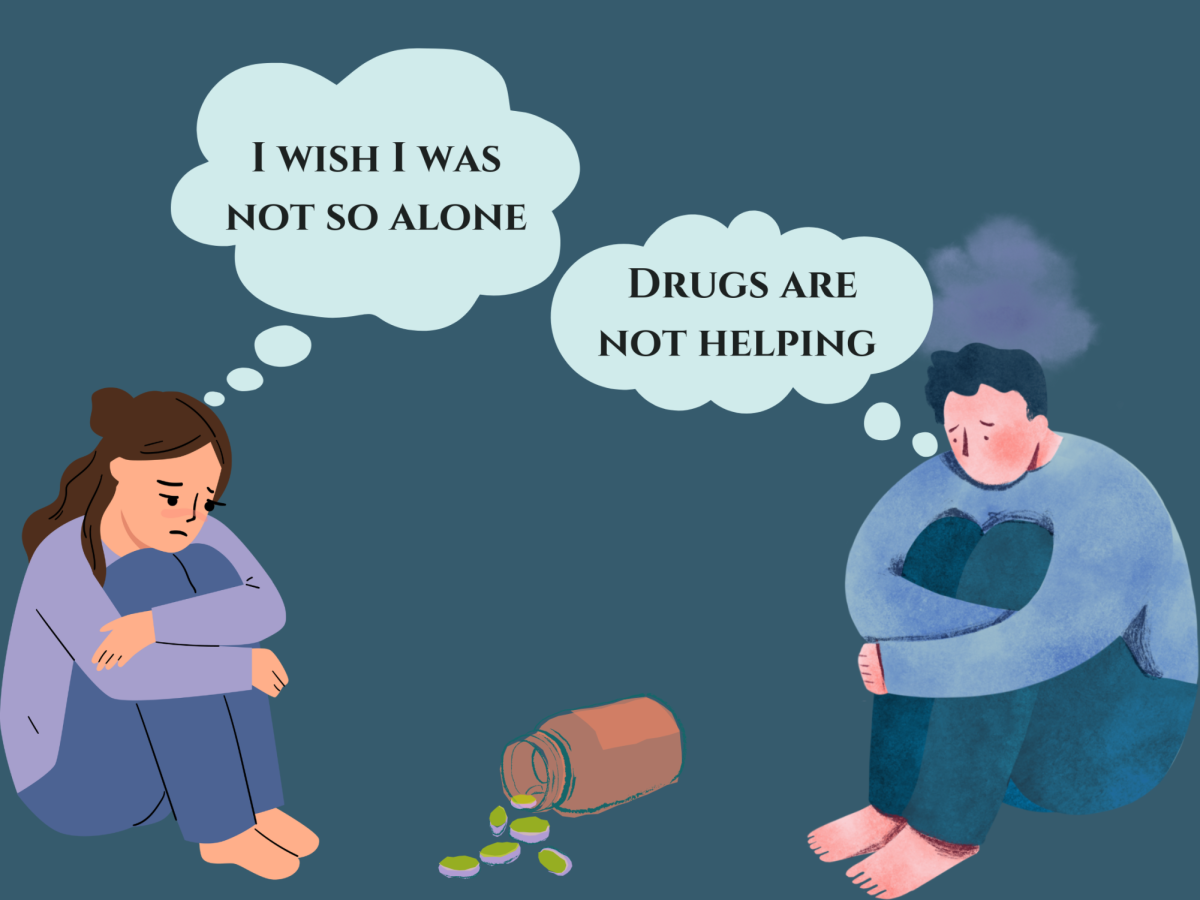About 50% of teenagers misused a drug at least once in 2020, according to the National Center for Drug Abuse Statistics.
Depression and anxiety in teens often lead to social isolation, which in turn, can lead to the increased use of drugs, such as opioids.
Opioids have contributed to 708 overdoses resulting in teen deaths in 2023, according to the Kaiser Family Foundation.
“Sometimes opioids are prescribed for post-surgery rehab,” psychology teacher Mark Moore said. “However, these drugs can be extremely addicting and potentially lead to an endless cycle of self isolation, and worsen depression and anxiety symptoms.”
While opioids do not cause isolation directly, addiction can lead to social isolation, which can further result in a depressive state.
“Feeling disconnected really impacts humans. Some people are more introverted, they do not want to be connected all that much. Some people are more extroverted, they love being out and about talking; but I think if it is not what they want, it is a problem,” guidance counselor Kerry Sheehan said. “People who feel disconnected often look for ways to relieve that feeling.”
During 2020, COVID-19 limited human interaction, forcing people to isolate themselves in their homes with little social interaction with the outside world. Many people relied on their phones and social media for connection with friends and family.
Research shows that COVID-19 contributes to detrimental effects on the development of the teenage mind, according to PNAS.
“I think it affected [students’ mental health]. A thousand percent. There is absolutely no doubt in my mind,” Sheehan said. “They had very limited opportunities to see other people their age.”
In 2020, opioid overdose deaths increased 38% nationally, according to the Continuing Crisis.
Depending on the connections middle school-aged children made after COVID-19, they could lead to opioid abuse in the future.
“After COVID-19, I felt as if my friends were secluded in their own bubble. Everyone my age seemed to be terrified to open their mouths and socialize with those around them,” freshman Kaylee Egan said. “As of today, talking to my friends can sometimes be a challenge. Communication is easier than when COVID-19 first started; however, talking to my friends is not the same as it was before COVID-19 started.”
Communication has changed due to isolation from COVID-19; it hindered the connections teens have with one another.
“If they internalized two years of home isolation, did not bounce back from it, returned to school and did not participate in any activities, it could lead to future opioid abuse; especially if they are already dealing with depression, anxiety or other mental health issues,” Sheehan said.
Some resources teens can use to receive help if they are battling addiction, depression, anxiety or any mental health issues include scheduling a visit with a guidance counselor, or calling/texting 988 for the Suicide and Crisis Lifeline. Additionally, the National Institute of Mental Health, CHKD Mental Health Care, and Substance Abuse and Mental Health Services Administration all have resources for teen mental health as well.













Gavin ferguson • Feb 17, 2025 at 2:15 pm
It was really well written and it really opened my eyes to the problems we are facing today